Espresso is the fastest growing category in the food and beverage industry from both a profit and a consumption standpoint. This rise in popularity of specialty coffee drinks, such as lattes or cappuccinos, has given way to new generations of coffee connoisseurs and baristas with a keen understanding and taste for espresso-based beverages.
Since it is a difficult drink to make from home, a commercial espresso machine is the perfect choice to add into a restaurant or café — a hugely profitable return on investment (ROI) is a near guarantee. Using national averages, it costs a company only $0.66 to make a latte in a to-go paper cup, including a lid and sleeve. The average cost of a latte is $3.50 which results in a business making $2.84 in profits. Depending on the type of commercial espresso machine a company chooses, which we will get into a bit later, there may be no additional labor cost at all.
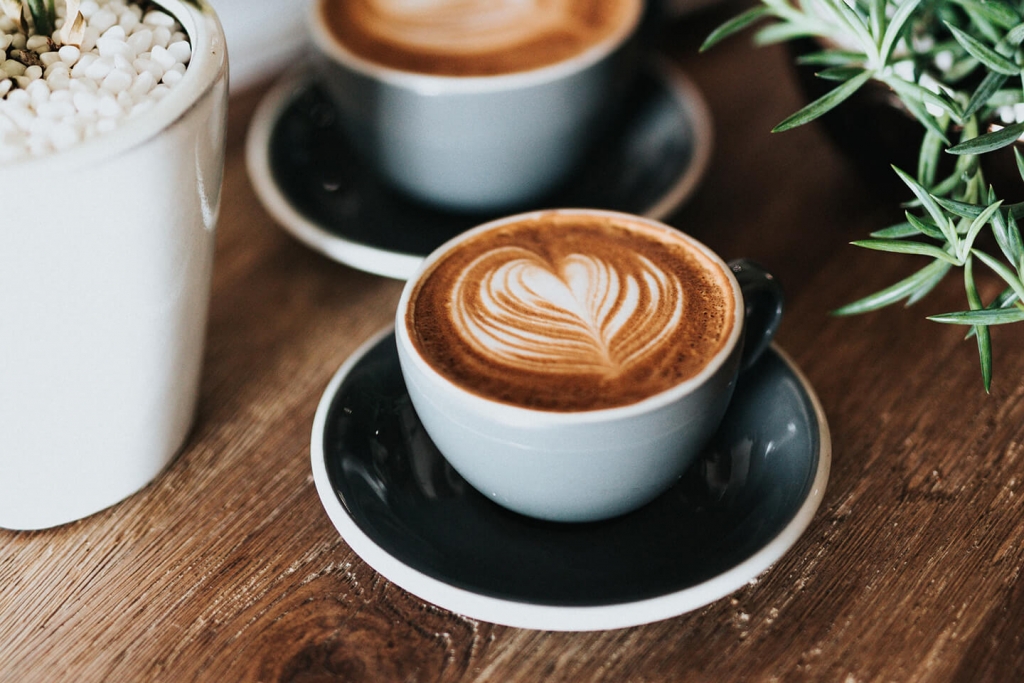
What Is Espresso?
Espresso is a coffee preparation method that puts 9-15 bars of pressure of extremely hot water (190°-200°F) through coffee to extract the rich and vibrant flavor of the bean — a sensory experience that cannot be replicated with any other method. Truly good espresso has citrus notes and is complex like wine.
A shot of espresso has three layers. Crema is the top layer of foam. It is comprised of the oil extracted from coffee beans. While crema doesn’t have a lot of flavor in itself it does appeal to other senses: it is aromatic, a beautiful golden-brown color, and captures a mouthfeel people love. Crema is also an indicator of a well-pulled shot of espresso. However, the real flavor of espresso is found in its second and third layers, the body and heart.
Ideally, for a proper cup of espresso, drink it within 45 seconds after it is pulled and served. Drinking an espresso shot within this time frame allows people to experience the freshest, most complex, and best tasting flavor. Espresso starts to oxidize and dissipate within a few minutes of being pulled.
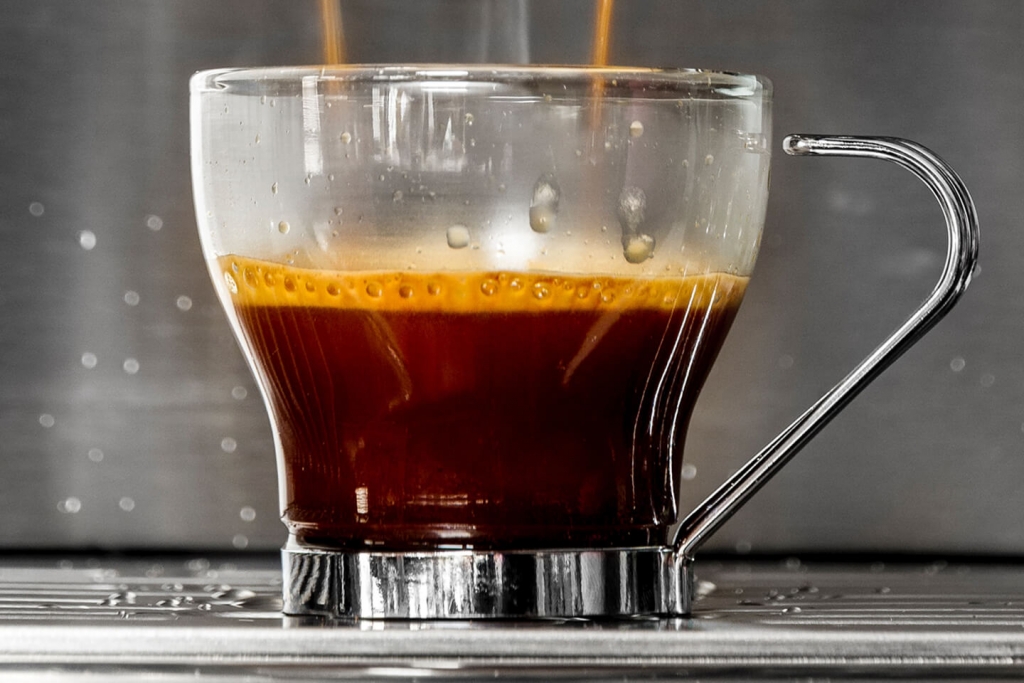
Technological Considerations
Commercial Espresso Machine Cups Per Hour
The term “cups per hour” or throughput is a misnomer in the espresso machine industry. Cups per hour actually refers to boiler capacity and is often greatly exaggerated in advertising terms.
When cups per hour is advertised for an espresso machine, some companies falsely advertise, for example, 1500 cups per hour. However, this misleading number doesn’t mean a business could pull 1500 shots of espresso in an hour — that would be impossible.
Cups per hour actually refers to the amount of water the boiler can heat each hour, and not how many shots can be pulled in an hour. For example, let’s say it takes 20 seconds to pull one shot. At 20 seconds each, 3 shots can be pulled in a minute, at most. When measured in hours, the number of espresso shots pulled would be a maximum of 180.
Must-Have Thermometers For Every Commercial Kitchen »
Commercial Espresso Machine Recovery Time
Recovery time is the time between pulls, whether that is pulling an espresso shot or steaming a latte. The best commercial machines will have no recovery time and should be able to pull or texturize a second shot without delay.
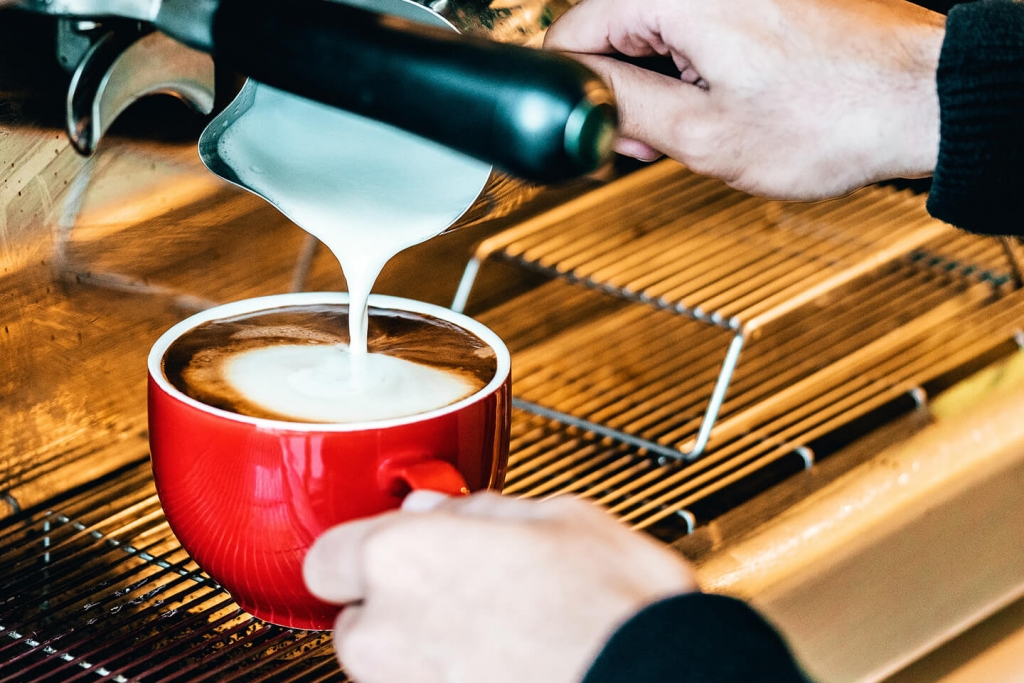
Double Boiling vs. Thermocycling
A double boiler system uses two boilers: one to heat up water and one to steam milk. Double boiler systems require recovery time between pulls. The most efficient commercial espresso machines today use thermocycling in place of double boilers.
Thermocycling works by heating a heavy group head to a specific temperature which forces the water to maintain that temperature consistently while the machine is in use. Thermocycling brewing systems have a number of advantages over double boiler systems including:
- Absolute temperature consistency throughout the brew cycle.
- Thermocycling is more cost effective.
- Thermocycling requires no recovery time.
- Fewer repairs.
Three Commercial Espresso Machine Types
There are three main types of commercial espresso machines to choose from depending on your knowledge level and intended service use: Super Automatic, Automatic, and Traditional.
Super Automatic
There are virtually no labor costs or barista training needed with a super automatic commercial expresso machine. At the push of a button, super automatics enable you to serve up cappuccinos, lattes, macchiatos, and several other popular espresso-based beverages in your restaurant or café.
Super automatic machines prepare beverages consistently every time. This consistency is key in building customer trust. Your customers will always know what to expect when they receive their favorite drink.
Super Automatic Sub Types
There are two sub types of super automatics: a one-step machine and a two-step machine.
- A one-step machine only requires the push of a single button.
- A two-step machine enables the user to select their beverage and milk type. Milk foams separately in a two-step machine. The machine still does everything for you and requires very little labor or special skills.
Currently, in a time where diets are changing and people are accustomed to choice, a two-step machine is ideal. A two-step super automatic commercial espresso machine allows foodservice establishments to offer a plethora of milk types based on diet, preference, and lactose intolerance. These choices include almond, soy, lactose-free, oat, and hemp milk. The level of choice and flexibility is up to you. In contrast, a one-step super automatic machine has limited capability in this arena.
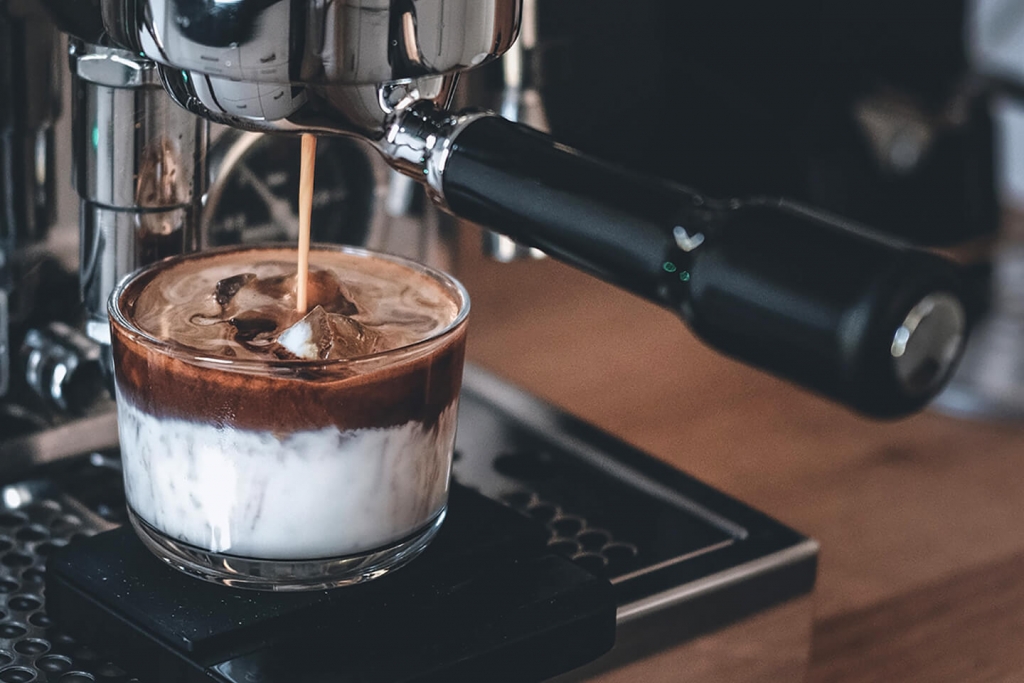
Automatic Machines
Commercial automatic espresso machines are the perfect balance between control and convenience. Automatic machines deliver quality beverages consistently and take away much of the guesswork of a traditional espresso machine. One convenience automatic machines have to offer is if the barista were to get up for the 20 or 30 seconds it takes the machine to pull a shot, the drink wouldn’t be affected because the machine is in complete control of the water. This allows the barista to tend to other tasks or the needs of customers.
Automatic espresso machines only require some effort and labor. The machine controls the extraction time and automates the steam by controlling the amount of water and the time the water pulls. The barista, however, gets to set up the shot which includes steps like choosing the beans and milk, tamping the grounds or using a pod, and locking it into place.
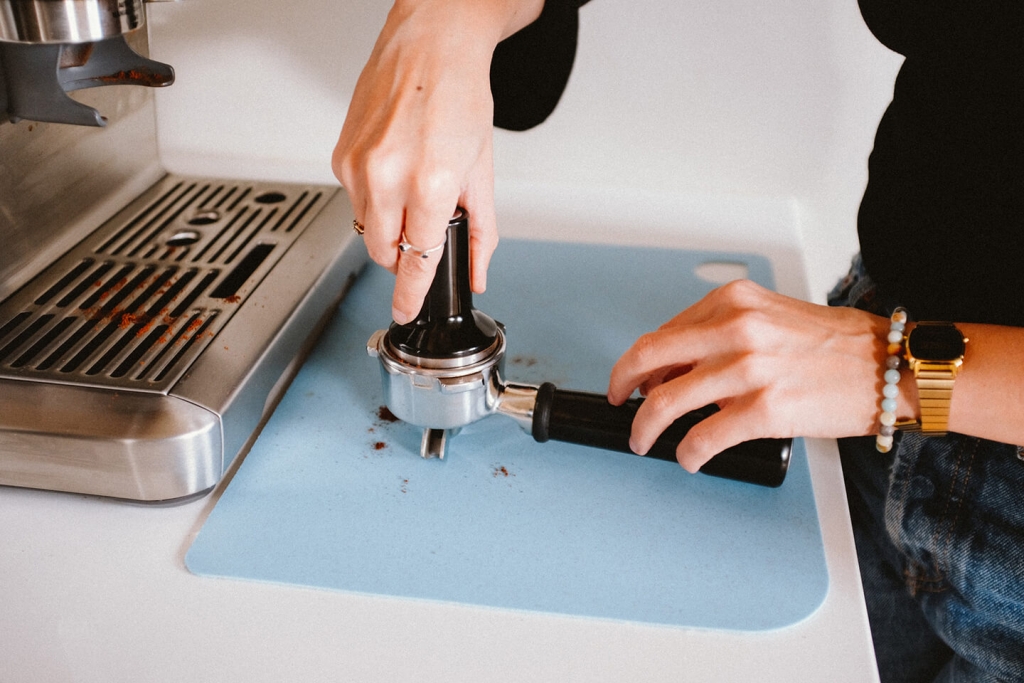
Traditional Machines
A barista has complete control when using a traditional/semiautomatic type because the machine simply pumps the water. The barista decides everything else: the water to bean ratio; the temperature; tamping the grounds; timing the pull; and turning the machine on and off. Giving a barista full control of their art is the number one method for crafting a magical shot of espresso.
However, operating a traditional commercial espresso machine is an art form that requires a high level of skill thus requiring a well-trained, educated staff. There are many factors to consider when pulling a perfect shot of espresso on a traditional machine. For instance, the weather, humidity, or time of year all inform a well-train barista on how to pull a shot. Changing beans can also result in a completely different flavor and different beans will need different water to bean ratios.
In summation, level of service and training are typically the deciding factors when choosing between a super automatic, automatic, and traditional espresso machine:
- Super Automatic – Espresso-based drinks at the push of a button or two. No barista training or labor necessary.
- Automatic – Some barista training needed, and some labor is necessary.
- Traditional/Semi Automatic – A highly skilled barista is a necessity when creating a perfect shot of espresso and espresso-based beverages on a traditional machine.
10 Beverage Servers That Like It Hot (And Cold!) »
Featured Astra Commercial Espresso Makers
All Astra commercial espresso machines are proudly handcrafted in the United States with USA-standard hardware. Customers and baristas alike love their quiet, internal motors.
Astra 2000 Super Automatic Espresso Machine, 220V, A-2000
The Astra 2000 is a 2-step super automatic machine with a double hopper, steam wand and simple modular design. As a super automatic machine, it is efficient, intelligent, and best of all, effortless. This super automatic espresso machine is easy to install, operate, and maintain. It is perfect for a business that wishes to invest minimal effort on barista training and daily operation, while serving up high-quality, steamy espresso beverages that your customers will love.
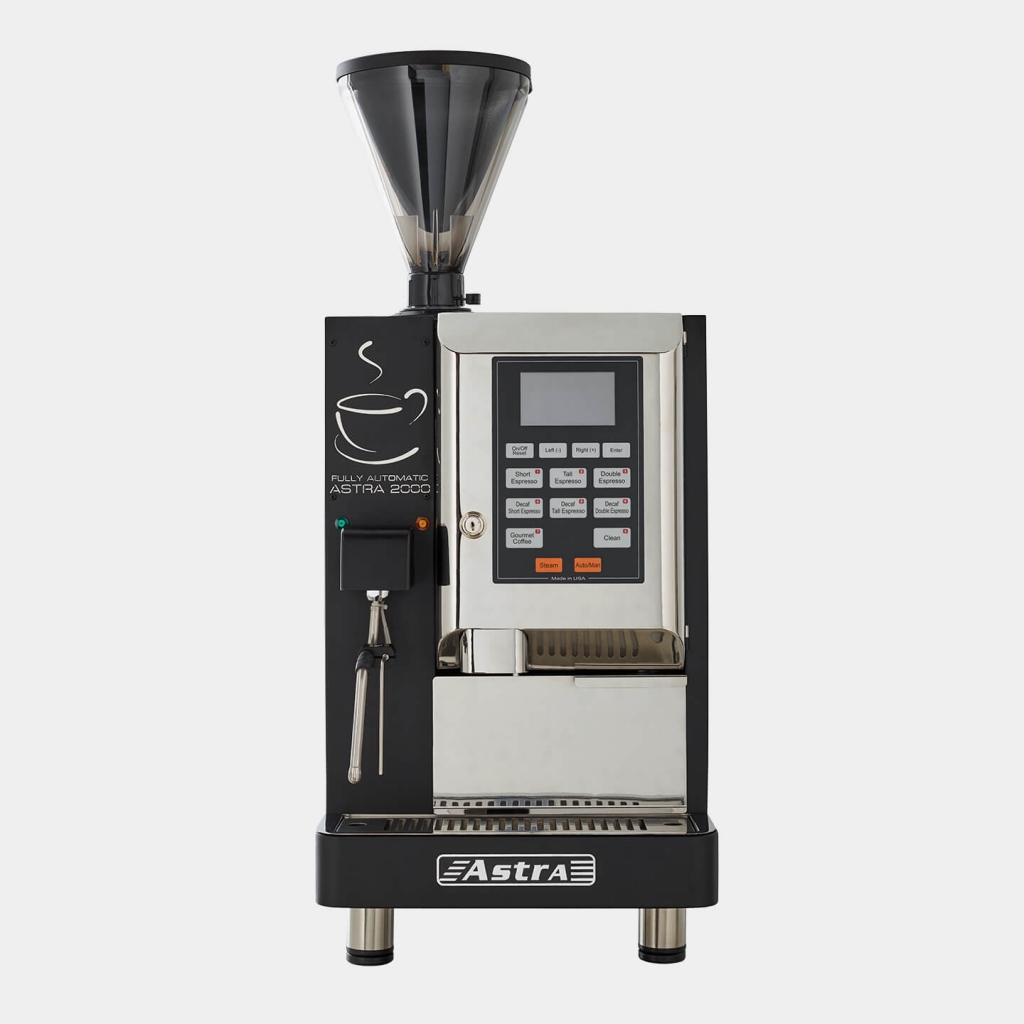
This two-step super automatic machine allows your staff to select a variety of milk types, because it is foamed separately. Having a choice of milk provides your customers with a tailored espresso drink and allows you to accommodate their diets. Despite having a choice of seven flavorful beverages, the machine still requires very little knowledge or labor to operate, making it a win-win for your customers and employees.
The Astra 2000 produces up to 7 different espresso drinks at any given time with the touch of a button including cappuccinos and lattes. It includes an automatic steam wand with a self-regulating temperature sensor for ease of use, and automatically turns off when the milk reaches its perfect temperature.
Additionally, the Astra 2000 includes Intelliprogram technology to make your life easier. Intelliprogram technology makes it possible to automate bean grinding, pressurized pouring, pre-infusion options, programmable power cycling, management reporting and troubleshooting capabilities.
This espresso machine can even be programed to automatically clean and rinse the brew mechanism every 10 minutes. Auto-cleaning ensures your customers receive the freshest espresso drinks available. The machine additionally includes a programmable on/off feature, so it will know when to turn on in the morning and power down at night.
Gourmet Automatic Espresso Machine, 220V, GA021
The Gourmet Automatic Espresso Machine offers more autonomy than the A-2000 super automatic, however, it does not require extensive training to use. Designed to maximize output, the Gourmet Automatic includes a self-tamping, high-density group head, copper boiler, and brass flare fittings for durability and longevity.
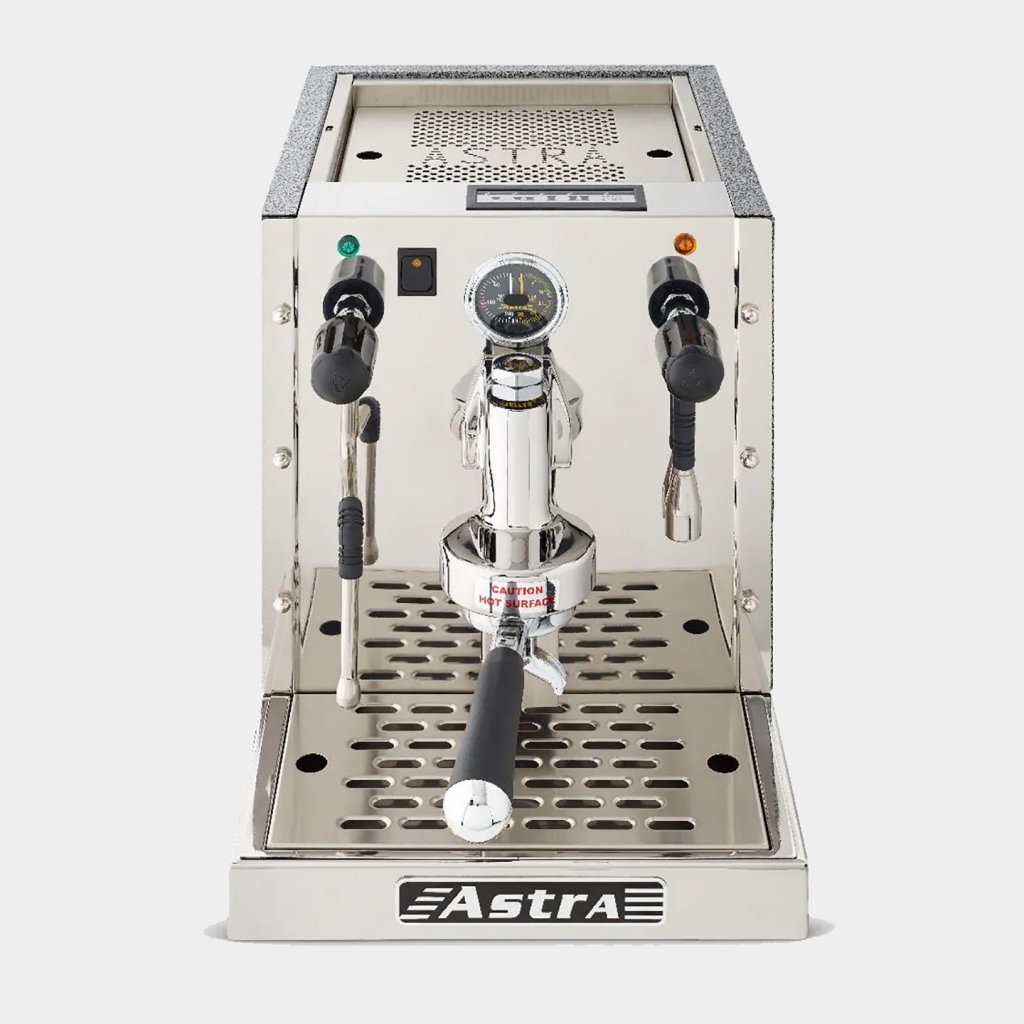
For portion control at the touch of a button, the Gourmet Automatic has you covered. It features automatic dosing, a self-tamping group head with a non-tamping option, one steam wand and manual hot water controls, as well as manual steam controls.
Some barista training must be provided. Baristas must know how to set up the shot, including picking the beans and tamping the grounds. The machine, however, remains in complete control of the water for your convenience. The Gourmet Automatic’s thermocycling system achieves precise temperature control for consistency and taste.
Mega II Automatic Espresso Machine, 220V, M2012
If your commercial establishment is in need of a higher volume automatic espresso machine that the GA021, Astra’s Mega II Automatic Espresso Machine can satisfy the crowds.
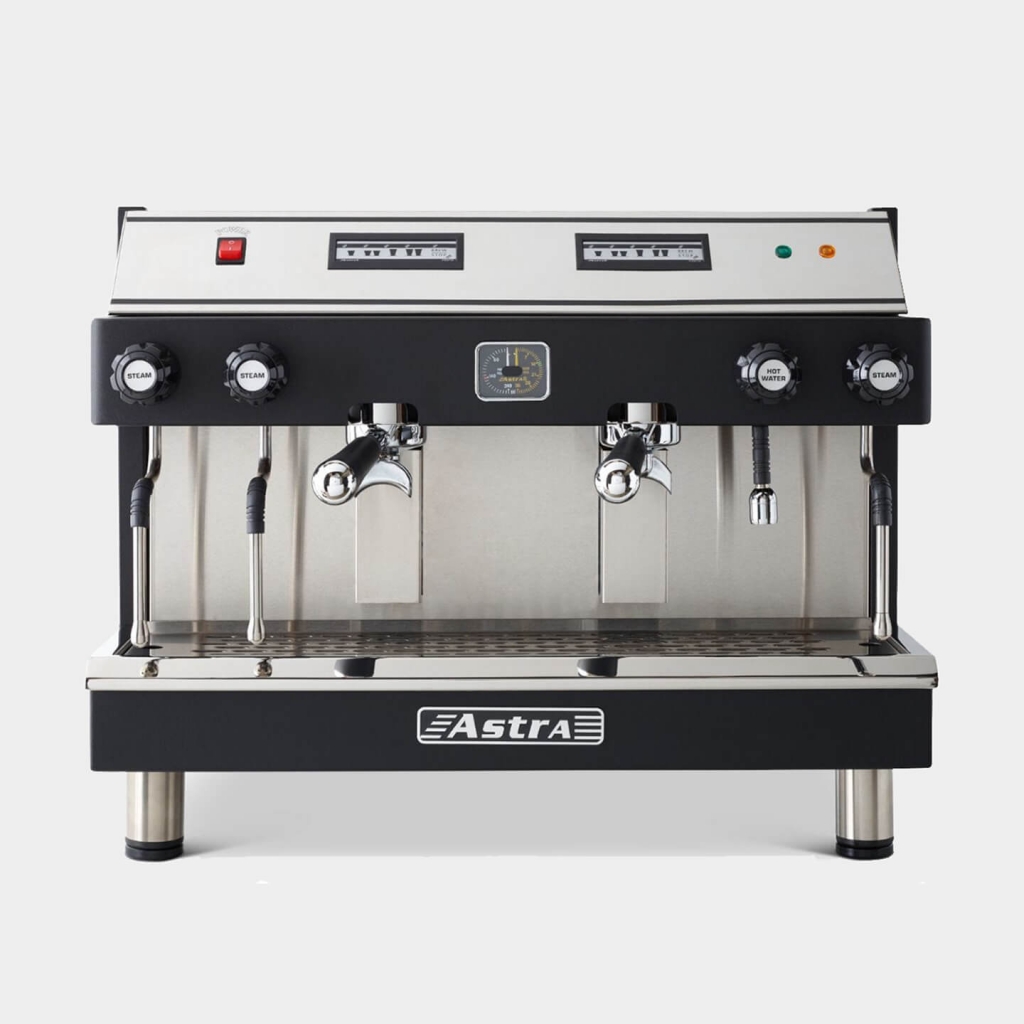
The Mega II Automatic features two self-tamping, high-density group heads so you can serve more people, faster. The two group heads include one single portafilter and two double portafilters. Also included are three cool-touch steam wands, manual steam controls, and manual hot water controls.
Additionally, the Mega II Automatic has a copper plated boiler, brass flare fittings, and a temperature stabilizing thermocycle system. Basic barista training must be provided.
Gourmet Semi-Automatic Pourover Espresso Machine, 110V, GSP023-1
No water hookup? No problem. The pourover design of the Gourmet Semi-Automatic means there is no need for a water hookup to operate. If you are looking for a traditional espresso machine for your hospitality establishment, office, or businesses in general, this is a great machine for your consideration.
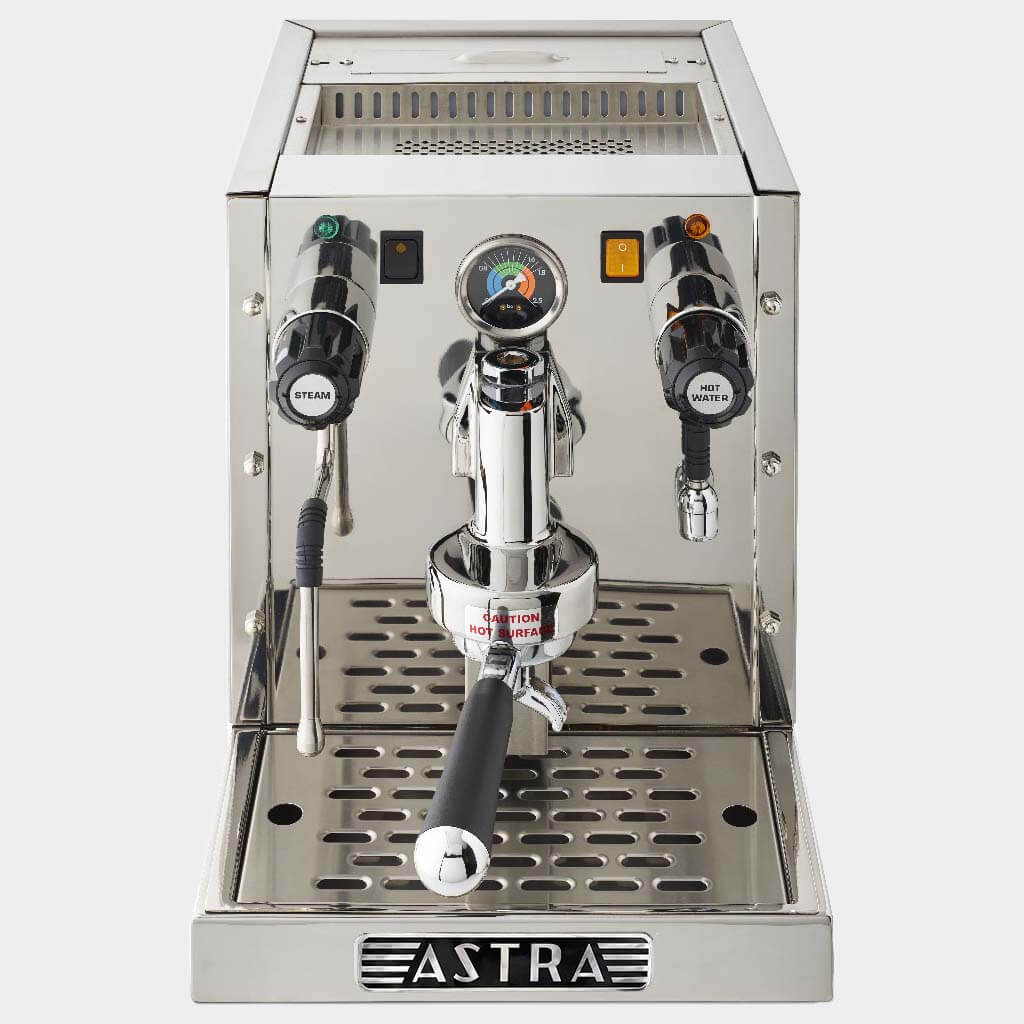
The GSP023-1 comes with one single portafilter and one double portafilter. It also includes manual steam and hot water controls, a hot water spout, a rotary-vane portafilter, and a self-tamping group head with a non-tamping option available.
Since this machine does not require a water hookup to operate, Astra added a low water safety system with alarm for your convenience. And of course, the Gourmet Semi-Automatic Pourover Espresso Machine uses thermocycling in combination with a high-density group head to achieve precise temperature control.
Barista training required to operate this machine.
MEGA III Semi-Automatic Espresso Machine, M3S018
The term “MEGA” sums up this espresso machine quite nicely. Ideal for busy coffee houses, the MEGA III Semi-Automatic Espresso Machine delivers unparalleled cups per hour and puts the barista in full control of their craft.
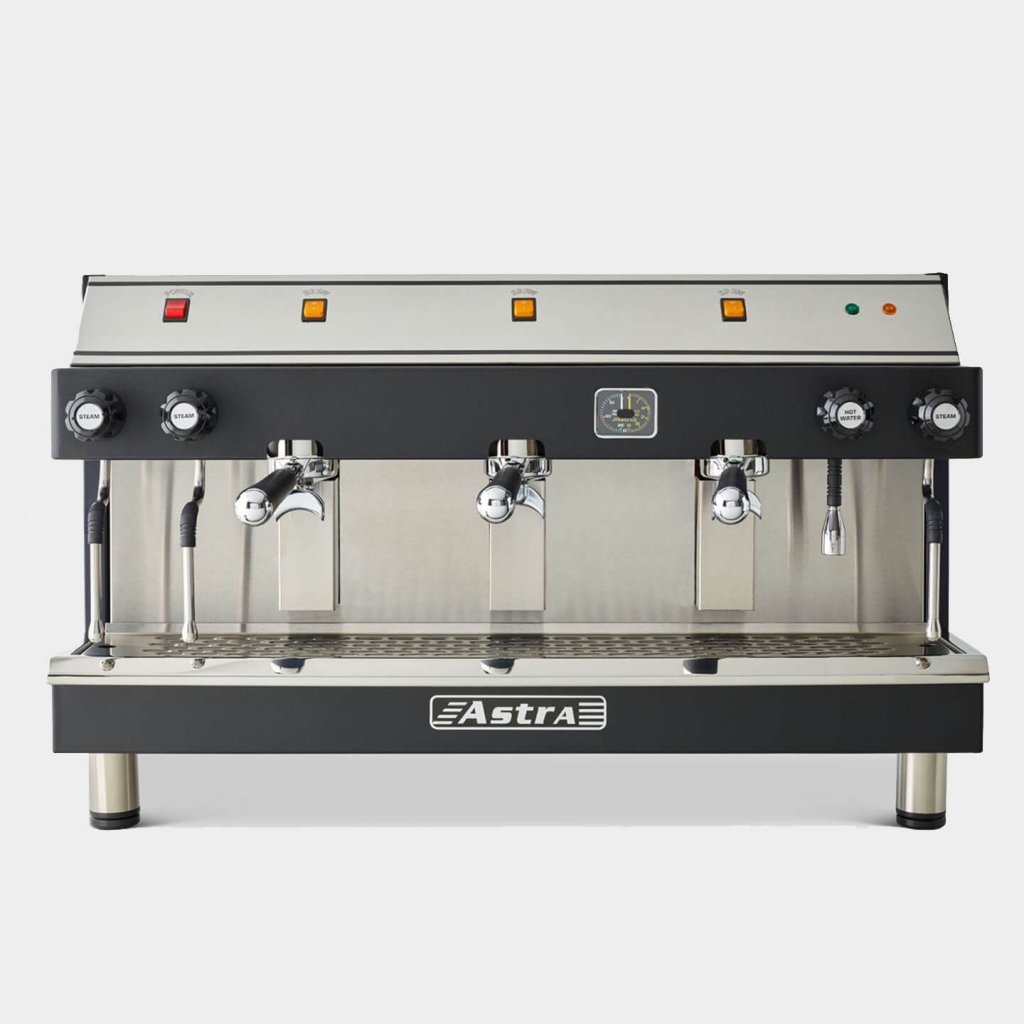
The MEGA III Semi-Automatic features manual dosing, manual steam controls with automated options available, and manual hot water controls. It also includes one single portafilter and three double portafilters, for high-volume establishments that pride themselves in the perfect shot of espresso. The MEGA III Semi-Automatic also uses thermocycling in combination with a high-density group head to achieve precise temperature control.
As with all traditional/semi-automatic commercial espresso machines, barista training required.
 About Astra
About Astra
Artfully engineered by an aerospace engineer using simple modular designs, Astra delivers highly reliable, affordable machines that have been handcrafted in the United States since 1993. Engineered for excellence, Astra products are remarkably durable and exceptional at delivering uncompromising espresso time after time. At Astra, our machines are designed to last.

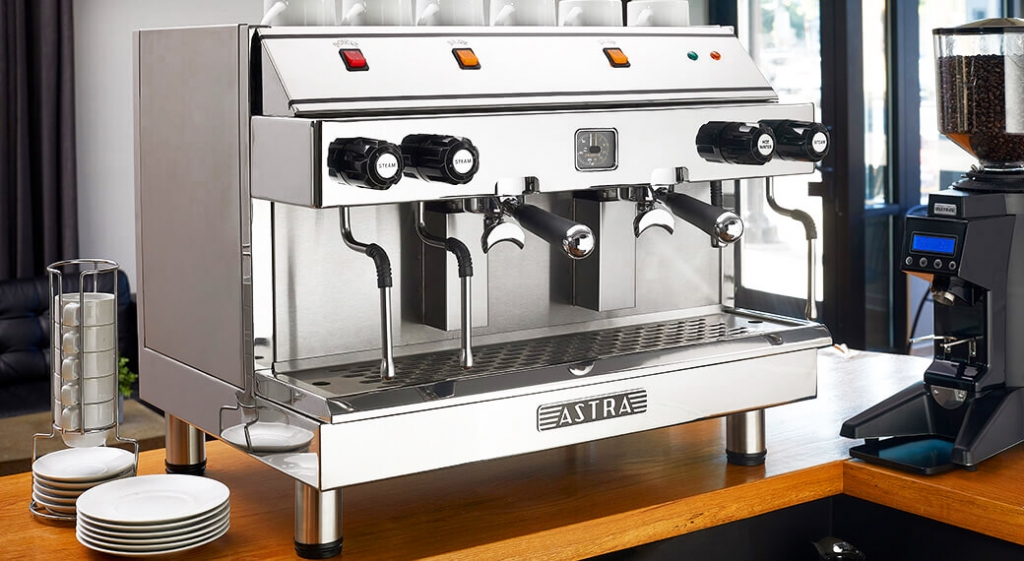


Very informative blog. Thanks for this information